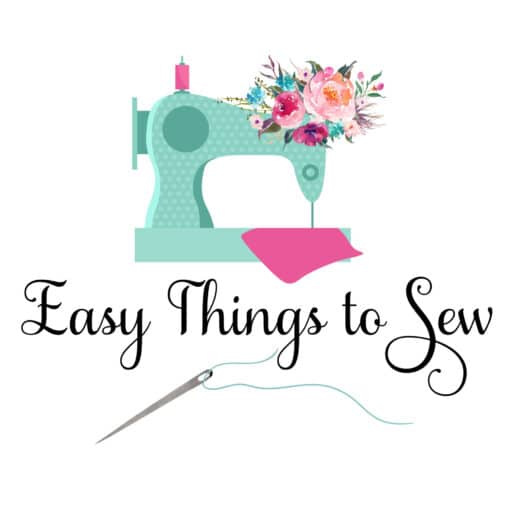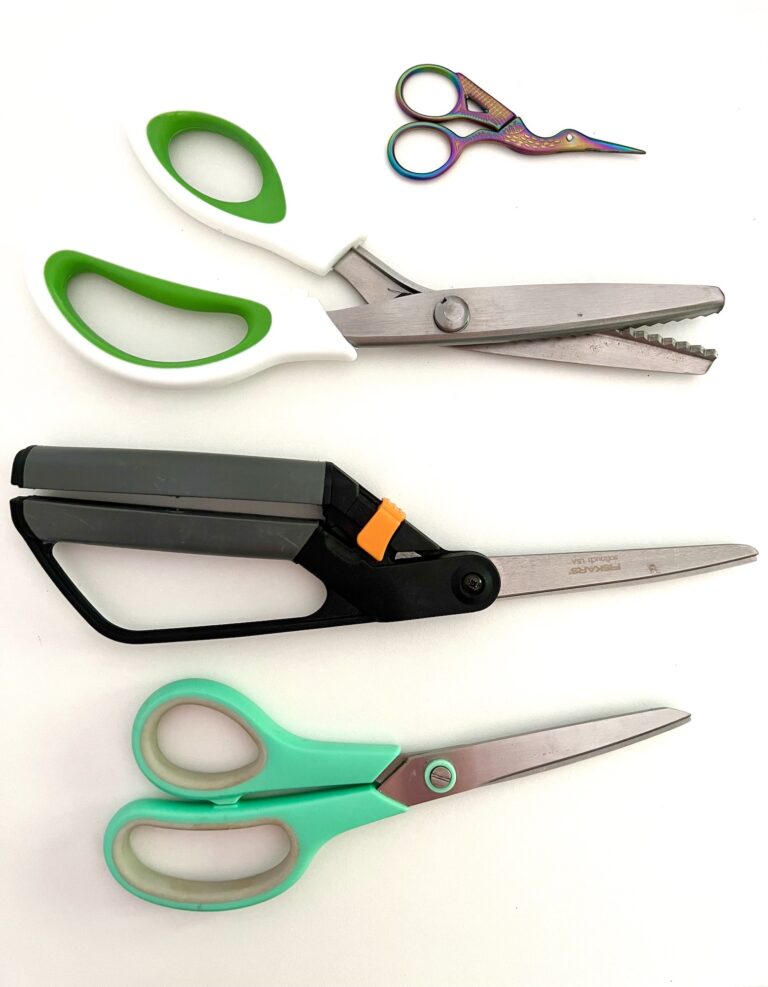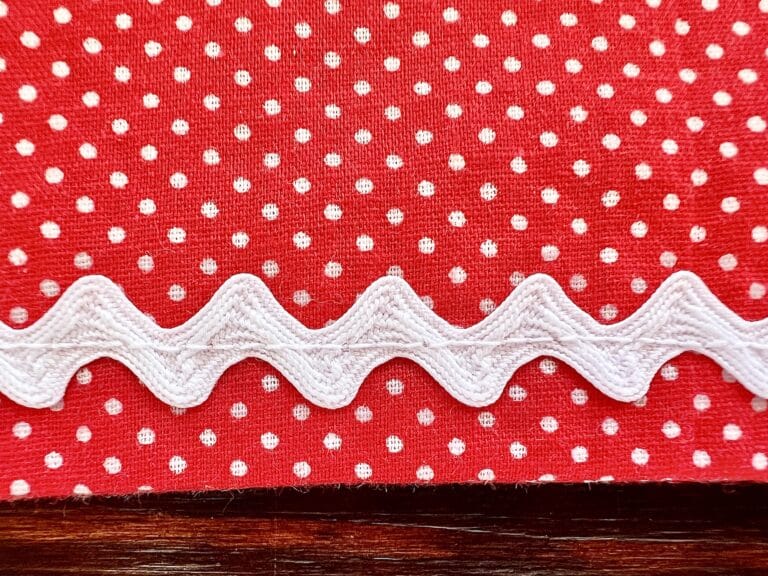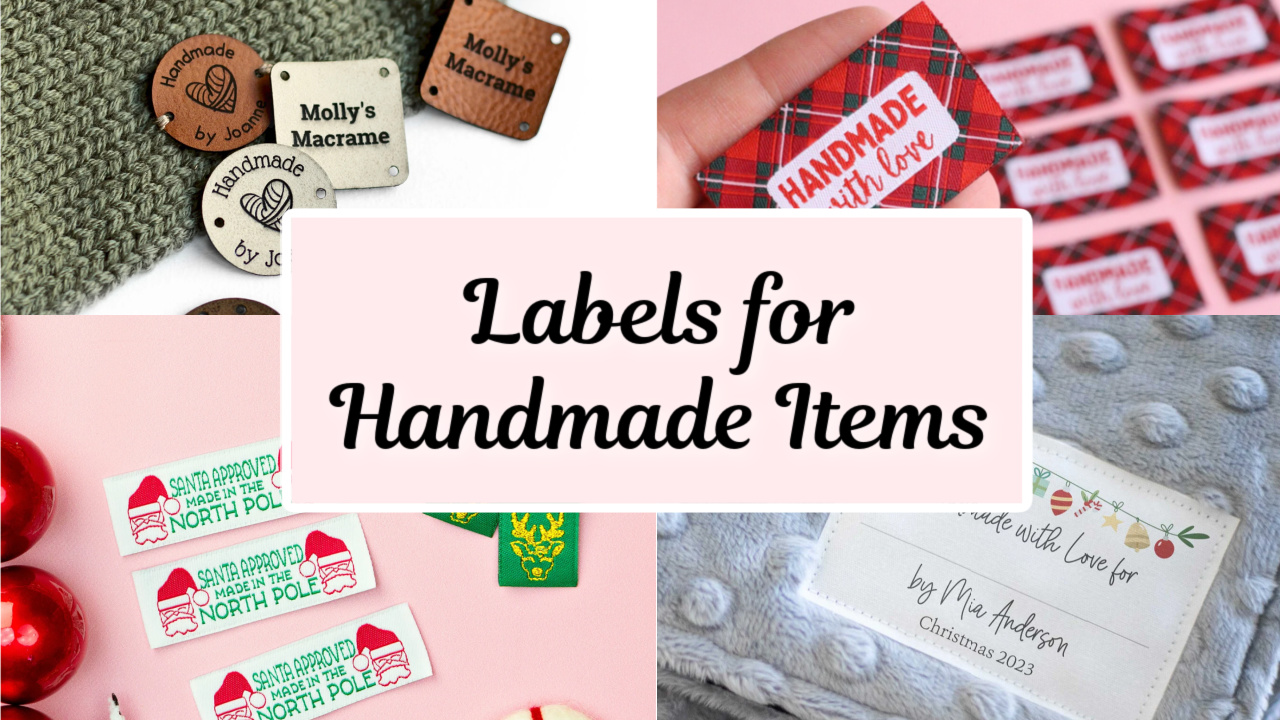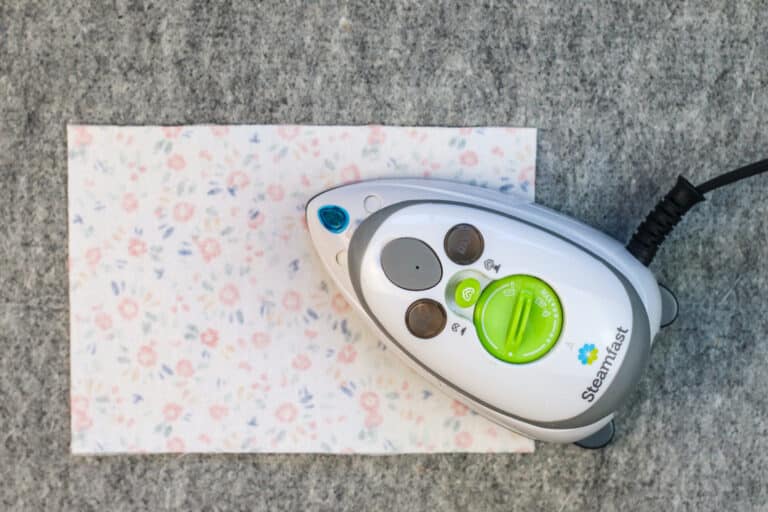What Are Sewing Notions? Essential Supplies You Need To Sew
Sewing notions are all of the things used in sewing projects other than a sewing machine and fabric. From scissors to thread to buttons or elastic, all of the accessories you use to do your sewing are considered sewing notions.
Usually the sewing notions that you need to complete a sewing project will be indicated in the pattern supply list, whether the pattern is online or on the back of an envelope of a printed pattern.
The wonderful thing is that many sewing notions are very inexpensive, costing just a few dollars. Most can be easily found at craft store, fabric store, big box stores such as Walmart, Joann, Michaels and online stores such as Amazon.
Here are the basic sewing notions that every beginner sewist should have in their sewing box!

Thread
Thread is available in numerous colors and types, such as polyester, cotton, and silk, to match different fabrics and sewing projects.
You will want an all purpose thread, as well as specialty colors to match your projects.

Sewing Machine Needles
Sewing needles are available in different types and different sizes, each designed for specific fabrics and purposes, such as quilting or sewing denim.
Not only will you need different sewing needles for different fabrics, but you also need some backups in case your sewing machine needle breaks or gets dull. Watch my YouTube video of how to replace a sewing machine needle to see how easy it is.
Bobbins
Bobbins are small spools that hold the lower thread in a sewing machine. They are used in conjunction with the upper thread to form stitches.
You will want several bobbins, each with a different color of bobbin thread that you frequently use. Spending a few dollars to get a variety of bobbins is a smart investment that will save you a lot of time.
Hand-Sewing Needles
Hand held needles are also an important part of your sewing kit, even if you use a sewing machine.
Small openings and delicate embellishments often need to be hand sewn. A variety of types of hand sewing needles are available, ranging in thickness and length, as well as the eye opening for threading.
Sewing Pins
Sewing Pins, also known as straight pins, may be sharp or rounded and can vary in length and thickness. There are many different types of pins to choose from.
Pin Cushion
You will need a safe place to store the sewing pins. Sticking them in a pin cushion is the best way to keep the sharp edges hidden.
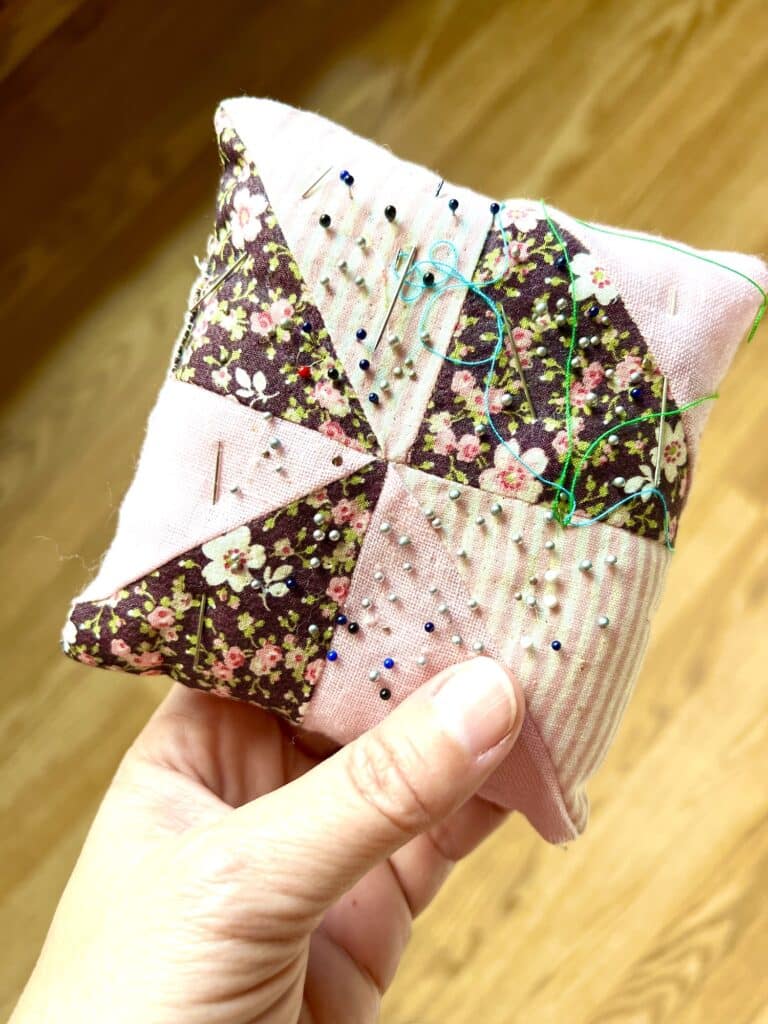
Binding Clips
Some sewists prefer using sewing clips rather than sewing pins. Even if you do use pins, there are times when the thickness is too big to accommodate a pin and a clip must be used instead.
Rather than buying sewing clips, also known as wonder clips, if you do not use them frequently, you can use clothespins, instead.
Fabric Marking Pens
These pens are specifically designed to mark fabric with ink that vanishes. A variety of fabric marking pens are available, with inks that disappear when exposed to heat, water or over time.
The type of marking tool you choose will depend on the projects you sew. For instance, if you are making items that cannot be washed, then you would want a marker that disappears when you iron it rather than a water soluble pen.
Fabric Scissors
Specialized fabric scissors are essential for precise and clean fabric cutting, and they should be kept separate from paper scissors to maintain their sharpness.
Fabric shears are very sharp scissors that can make cutting fabrics so much easier and reduce fraying of the fabric.
See our Guide to 12 Different Types of Sewing Scissors to learn what scissors are best for you.
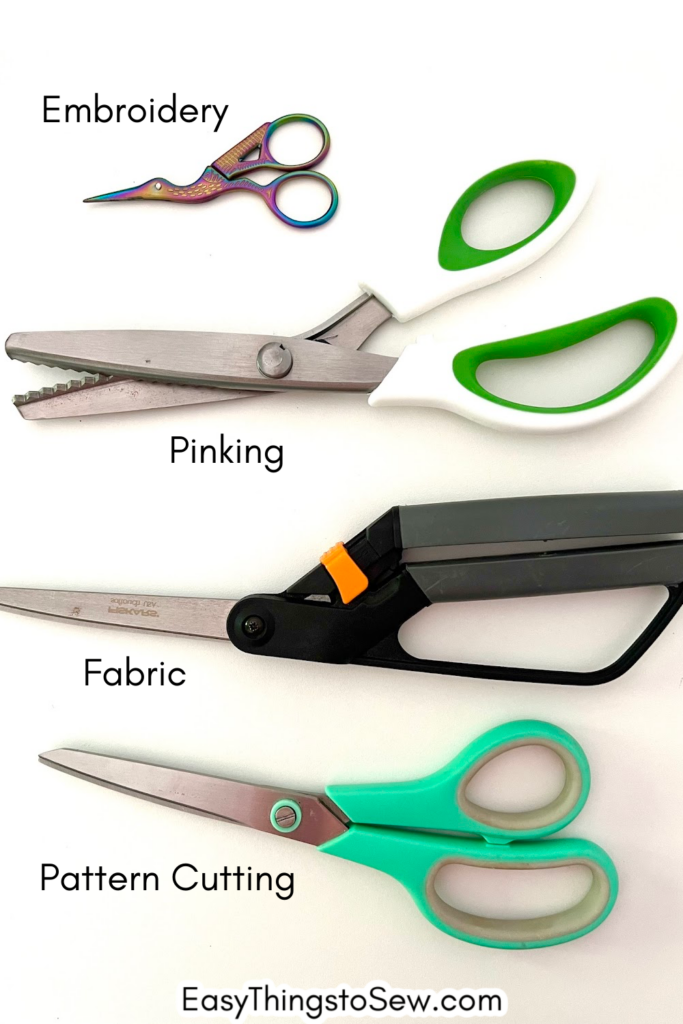
Rotary Cutters
Rotary cutters are not necessary for cutting fabric, but many people prefer the ease of using a rolling cutting blade to measure and cut pattern pieces. To use this cutting tool, you will also need a special cutting mat.
Thread Snips
If you don’t want to use a large pair of scissors every time you cut thread, then a small pair of thread snips are essential. These thread cutters are smaller than scissors and fit easily in your hand.
Embroidery Scissors
These smaller scissors usually have thin, narrow points and are super sharp. Embroidery scissors are great for working on smaller projects, making small cuts in fabric, or cutting threads and embellishments.

These are the embroidery scissors that I bought because I liked how it looked like a bird! Many of the embroidery scissors have fancy embellishments.
Pinking Shears
Pinking shears have a serrated cutting edge that creates a zigzag pattern on fabric edges, preventing fraying and adding a decorative touch.
This is the inexpensive pair that I bought and I am happy with them.
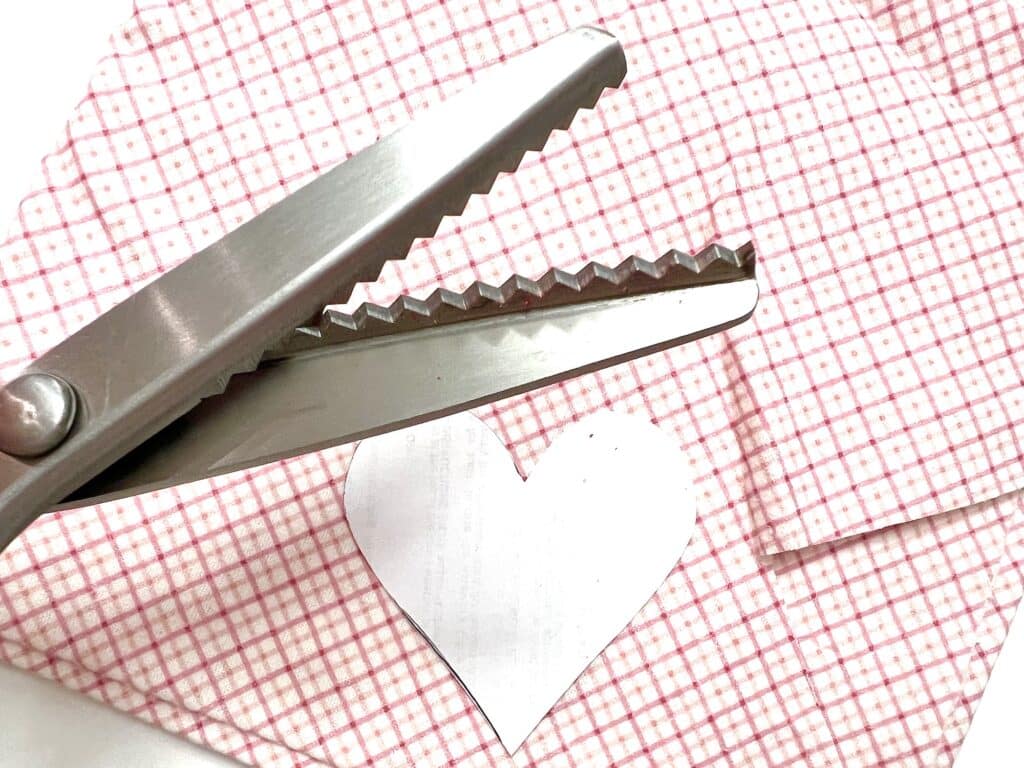
Related Post: I used pinking shears on my stacked hearts bookmark for a decorative look.
Buttons
Buttons come in various shapes, sizes, and materials, from classic round designs to novelty shapes and sizes. They are used for functional purposes, such as fastening garments, as well as for decorative embellishments.
Zippers
Zippers are indispensable for creating openings in garments, bags, and other sewn items. They come in different lengths and are available as regular zippers, invisible zippers, and more.
Elastic
Elastic is a flexible and stretchy material that is used to create comfortable waistbands, cuffs, and closures in garments and other sewn items.
Velcro
Velcro, also known as hook-and-loop fastener, is a convenient and adjustable closure option for garments, accessories, and home decor projects, such as pillows.
Bias Tape
Bias tape is a narrow strip of fabric cut on the bias (diagonal grain) and used to finish or bind raw edges of fabric, especially on curved or delicate areas.
Seam Ripper
A seam ripper is a handy tool for removing stitches and correcting sewing mistakes. Its sharp point and blade make it easier to unpick stitches without damaging the fabric.
My personal favorite is this small, very inexpensive seam ripper. However, many people prefer a larger, more ergonomic seam ripper.
Thimble
A thimble is worn on the finger to protect it when pushing a needle through tough fabric or multiple layers.
Measuring Tape
Measuring tape, also known as a sewing tape or tape measure, is used to take body measurements, determine fabric dimensions, and ensure accurate seam allowances.
Some are retractable rulers and others need to be rolled up to be stored.
Tailor’s Chalk
Tailor’s chalk is a marking tool used to transfer pattern markings onto fabric with ease and precision.
This fabric chalk is great for marking large patterns. If you are making small patterns, you may prefer a fabric marker with disappearing ink, instead.
Iron and Ironing Board or Pressing Mat
Having a good-quality iron and ironing board is crucial for pressing fabric, seams, and finished garments for a professional look.
If you don’t have room for a large ironing board, a pressing mat or pressing cloth is easier to store and can be used on your table or countertop.
Sewing Gauge
A sewing gauge is a small ruler with a movable indicator used to measure and mark hems, seam allowances, and other small measurements.
Needle Threader
This tool helps to easily thread needles, especially for those with poor eyesight or when working with fine threads.
Seam Gauge
Similar to a sewing gauge, a seam gauge is a ruler with a sliding marker that helps measure and mark seam allowances accurately.
Sewing Machine Oil
For those who use sewing machines, sewing machine oil is essential for maintaining the machine’s smooth operation.

Presser Feet
Sewing machines come with a variety of presser feet, each suited for different sewing techniques, such as zippers, buttons, and blind hems.
Bodkin
A bodkin is a tool used for threading elastic, ribbons, and drawstrings through casings and channels in garments and accessories.
Rulers
In addition to a measuring tape, you may want a clear ruler. These rigid rulers allow you to see through the clear plastic to the fabric underneath which can be helpful when you need to match up patterns or designs.
Seam Roller
If you are like me and hate having to heat up an iron to press a seam, then a seam roller is a perfect alternative to getting crisp seams that lay flat.
This small tool is a roller with a handle will press your fabric down and flatten it as an iron would. It is a perfect alternative if you do not like to have an iron heated while you are sewing, you are working on a project while off-grid or without electricity, or if you sew while kids or pets are around and a hot iron is a safety hazard.
Tweezers
A pair of blunt tipped tweezers can help you pull cords and drawstrings through casings, as well as turn out small pieces of fabric.
Turning Tool
A turning tool is one of the essential sewing notions you need in your kit. Sewing any project with corners will require a turning tool of some kind to push out the fabric in the corner so that you get a crisp 90 degree corner.
While you can use a pencil or chopstick as a turning tool, the points on those objects can puncture your fabric and cause holes. A sewing turning tool will have a blunt end to easily push out the corners without worrying about puncturing the fabric.
Snaps
These closures are often used for purses, clothing and small storage bags.
Hook and Eyes
If you sew clothing you may use a hook and eye closure which is easier to attach compared to a buttonhole or zipper. However they can be more difficult to fasten with your fingers.
These very small closures are often used on the tops of dresses along the collar or for other delicate clothing.
Trims
There are a variety of trims that you can use to personalize a sewing project, including:
- Rick Rack
- Pom pom trim
- Lace
- Piping
- Ribbon
- Tassels
Not all of these sewing notions have to be in your sewing kit, but you will find that having a few of them on hand will make your sewing projects easier, more enjoyable and more professional-looking.
Pin this list to Pinterest to save for later! Add it to a sewing board or quilting board for easy reference.
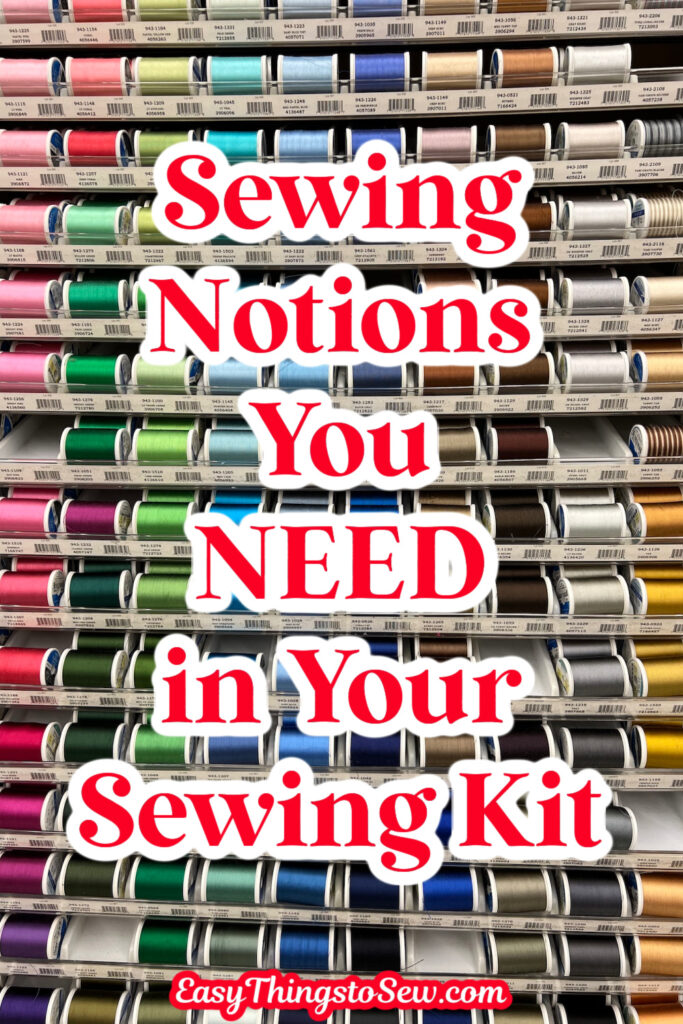
Want more beginner sewing guides? See these next:
